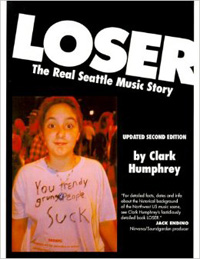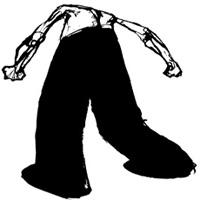 Loser
Loser
The Real Seattle Music Story
by Clark Humphrey (Feral House)
by William Ham
I could hardly blame you if you’d rather be impaled lengthwise atop the Space Needle than read or hear another word about the Seattle jamming/java/junk scene. I used to live out there myself (before the deluge) and I’d like to see a real rain come down and wash all the flannalysis into the Strait of Juan de Fuca. You would think that all that’s worth saying `bout the Puget sound has been said (and said and…). That, amazingly, is where you’d be wrong. Loser (named for the infamous Sub Pop T-shirt slogan), an exhaustively researched historical document of the whole cultural milieu of the Emerald City, was actually conceived by author Clark Humphrey well before grunge broke out and spread like a particularly virulent strain of e. coli, and is thence a far more full-bodied explication of Rainville rock than an entire shelf of tossed-off Northwest nabob-natterings.
Humphrey digs up a wide array of info, from oral recollections to flier reproductions, but the beauty of this book lies in the minutiae. Didja ever wanna know where Matt Groening got the inspiration for Krusty the Klown? Why Duff McKagan is the prodigal son of Seattle rock? How an angry letter about a band that didn’t yet exist may have led to the birth of the “Seattle sound?” Whether you did or not, it’s here. But interesting factoids do not a good book make; Humphries distinguishes himself by delineating the very essence of Seattle, a place where history, geography, and lousy weather combine to make the perfect hothouse for an isolated, individual style all its own. (Finally, an explanation for the existence of Paul Revere and the Raiders.) That said, it’s the oft-mauled corpse of grunge that gets the final, decisive kick in Loser, as Humphrey provides a startlingly simple setting for its genesis: the lobby connecting a punk and a metal club where patrons of each met, mingled, and realized that they had more in common than any of them thought. That’s right, kids, the great hype of the ’90s is all architecture’s fault.



